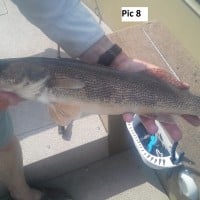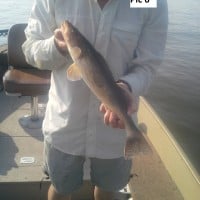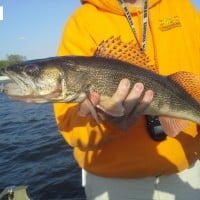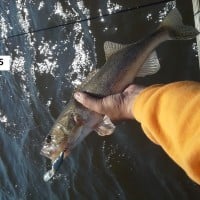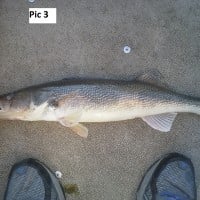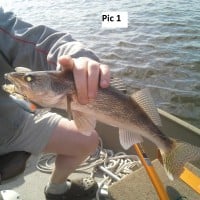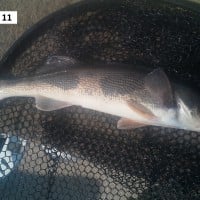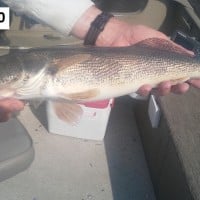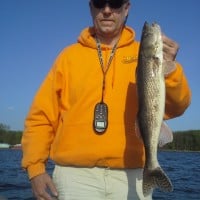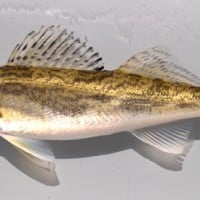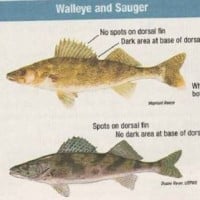It would help a lot to be able to see the dorsal fin. Unfortunately, most of your pictures do not show the dorsal fin.
After viewing all the pictures repeatedly, the only fish that I might possibly identify as a saugeye, is picture #1.
All the other fish appear to be saugers.
When we catch a possible saugeye, we always try to identify it first as either a walleye or sauger. It we can’t positively identify it as one or the other, then we can make the assumption that its a saugeye.
The picture I’ve attached is from last December on the Wisconsin river. My long time friend Kevin achieved a rare catch when he caught a limit of 3 fish below the Prairie du Sac dam. One fish was a sauger, one a walleye and the other a saugeye. Unfortunately, you can’t see the dorsal fin on the saugeye in this picture either.
The dorsal fin and the gill plate will both give some very good clues as to which species the fish is.
True walleyes are generally very easy to identify as are true saugers.
True walleye have no spots on the dorsal fin and the cheek over the gill plate is smooth. Not to mention the obvious white spot on the tail and lesser know but equally identifiable black spot at the base of the dorsal fin. (tail end of dorsal fin)
True saugers have rows of black dots on the dorsal fin, rough, sandpaper like cheeks over the gill plate and no black spot at the base of the dorsal fin. And most of already know they also have dark patches & a much smaller white spot on the tail.
Walleyes & saugers also have a general color pattern that differs considerably from different bodies of water or many times even from the same body of water. Walleyes generally being more yellow and saugers more tan, brown or sand colored with darker blotches on their body.
Saugeyes, can and will have all kinds of varied color patterns ranging from almost identical to a walleye or sauger, which inevitably makes it very hard to identify.
When you look at the dorsal fin of a saugeye, many times it will have spots but they will not be in organized rows or the spots will not be uniform is shape. (irregular)
The cheek above the gill plate will be slightly sandpaper like but not like a true saugers and certainly not as smooth as a true walleye.
If you get in the habit of closely inspecting more fish for the details listed, it can help make it a little easier when trying to identify a true saugeye although there are certainly instances where its going to take a scientist to tell for sure.
Attachments:

IMG_2412.jpg
